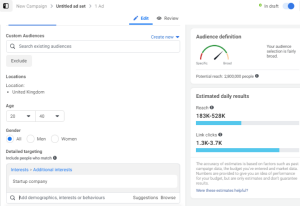Teenage Mutant Ninja Google
 You’ve probably been bombarded with blog posts and news articles about the death of SEO. The truth is it’s not dead, it’s mutated. Sound like the script of a Marvel Comics series? Not quite but what others are sharing may as well be fiction.
You’ve probably been bombarded with blog posts and news articles about the death of SEO. The truth is it’s not dead, it’s mutated. Sound like the script of a Marvel Comics series? Not quite but what others are sharing may as well be fiction.
Search Engine Optimization (SEO) used to be about keywords on and under your page. If you wanted to rank on page one as a plumber you stuffed your page with the word plumber, sometimes hidden from the human eye. You would also set Meta tag keywords to plumber and other variations and mis-spellings of the word plumber.
Link Stuffing is an even bigger no-no. You will do hard time if the majority of your inbound links are a result of link farms or link spamming. Google has gone so far as to shut down several link farms over the last few years. There are several articles, and I am probably understating that number, that will show you how to get high quality links back to your website without being penalized by Google.
Google grew up, and so should your website. Today Meta tag keywords are useless. Keyword stuffing will get you sent to the depths of the internet black hole, possibly never to recover, and hiding text hoping to ‘cheat’ Google..well good luck with that.
What is Google Looking For? Your 2015 SEO Guide
Google is still king of the search engine jungle although other search engine giants Yahoo & Bing have been chomping  at that position for a while. There are also some search engines in their infancy that are getting some use because they don’t learn your search behavior or track your location. Google still accounts for close to 70% of all searches even today. Google is also the hardest to position your website on. I can usually have a site ranked on the first page of Yahoo and Bing relatively quickly and with little effort but Google is a different animal altogether. So what is Google looking for?
at that position for a while. There are also some search engines in their infancy that are getting some use because they don’t learn your search behavior or track your location. Google still accounts for close to 70% of all searches even today. Google is also the hardest to position your website on. I can usually have a site ranked on the first page of Yahoo and Bing relatively quickly and with little effort but Google is a different animal altogether. So what is Google looking for?
- Social Media Signals-While not an official part of their algorithm (yet) you can be sure that Social Media plays a big part in placement on Google. It’s not enough to create a profile with a link back to your website. There has to be some sharing going on. Didn’t your parents teach you to share?
The sharing has to come from multiple sources. It’s not enough for you to just share your site to Twitter and Facebook. Others have to do the same. It’s not enough to just share to Twitter and Facebook. There’s also Google+, LinkedIn, Pinterest, Tumblr, StumpleUpon and so many others.
- Mobile Optimization-Did you know it is more likely you are reading this on a mobile device than on a laptop or desktop? No? Well Google knows that. In fact if your website is not mobile friendly (responsive) then you will find it difficult to rank on the first page of Google.
Something to consider here. Some web designers create two versions of your site. One is a desktop version, and the other is a mobile version. The mobile version usually has a URL such as m.mysite.com. This can actually hurt your chances of showing up on the first page. You’ve created two sites essentially, and those sites are competing against each other.
Have your web designer create a responsive site. A responsive site looks at the size of the screen it is displaying on and adjusts accordingly. This is quicker for the end user and more appealing to Google.

- Content, Content, Content….and more content. Your site should strive to have relevant content. Make yourself the expert on what it is you do. This can be accomplished by actually being the expert but also ensuring your website has content that you created (not copied from somewhere else). The content should be timely and consistently updated. The easiest way to do this is with a blog that is part of your website. Creating a blog that is not part of yourdomain.com will not help your site’s search engine ranking. If you use content as part of your marketing strategy (and you absolutely should) then your blog should have an address at yourdomain.com/blog or similar.
Your blog should also include images properly tagged, videos, podcasts and any other type of media you can add to make it more appealing to the end user.
Of course there are some technical aspects of your site that you will want to address such as using certain types of markup language and using keywords in your URL but we’ll leave that for another discussion.
Added Bonuses
Recent announcements from Google:
Tweets will soon be indexed in search results. This can be good and bad for you as a business. If you went on a rant about a client or something along those lines you could in fact end up hurting your reputation. Having Tweets indexed with information relevant to your business will surely help develop more traffic back to your website.
The increase in voice searches will further require websites to be responsive. If someone searching for “Four Star Italian Restaurants in New Haven, CT” using voice search Google will look for mobile friendly versions of that search because it is most likely being done from a smart phone.
Another recent announcment from Google stated SSL Certificates will also help improve your search results.
One more note, primarily because there are some SEO “Experts” still promoting the use of Authorship…Google Authorship no longer exists. This IS in fact dead. Your site should be using Rich Snippets now. Ask your SEO/Digital Marketer about it. If they say Google Authorship it’s time for a new agency.
(215)
Report Post









